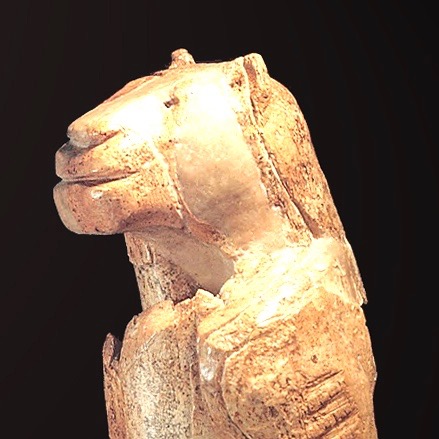



One trait that makes humans different from all other animals is our imagination: the ability to visualize something that doesn’t really exist and then make it real. We all use our imaginations every day, and it’s so automatic that it’s easy to take it for granted.
But there was a time in our distant past when – if you haven’t thought about this it may be hard to accept – humans didn’t have an imagination. In other words, it’s hard to imagine that we couldn’t imagine.
Early Homo sapiens spent their time hunting, gathering, and tending to all the other basic survival chores like the rest of the animal kingdom. At that point, our brains did a good job of keeping us alive, but abstract thinking was somewhere off in the distant future.
Over the millennia, we evolved and made the game-changing leap from survival to abstract thinking. We’ll never know exactly why or how this transformation happened, but it’s fascinating, and hopefully a bit humbling, to think about the change and where it’s led us.
Over the next few weeks we’ll highlight what early humans and some of our more recent ancestors did with this newfound imagination. We’ll take you to a cave in Germany where humans took their first steps into an imaginary world, and then we’ll jump forward in time thousands of years to the mysterious messages written in petroglyphs in America’s desert Southwest. And finally, we’ll go down south to the Andes to listen to the imaginary voices of the Quechua’s talking textiles. We can’t imagine the trip without you, so we hope you’ll follow along.
Happy Trails,
James & Terri
Last Updated September 5, 2023
Photo Credits: 1. Glen Carrie 2. Steven Yabek 3. Bradshaw Foundation 5. Louis Maniquet


Very creative photography and that light bulb moment is thought provoking.
Suzanne, when it comes to blog post publication, Terri is a Gallivance secret weapon. She’s our a one-person art department, and she gets full credit. I hope you enjoy the series. ~James
Thanks James for letting me know. I will certainly enjoy Terri’s art series.
Sounds like a great idea for a series of posts. I look forward to reading them!
Henry, I remember reading your interesting and thought provoking post on ancient Venus figures, so this series should be right up your alley. Get a jump on our next post folks:
https://myquest.blog/2020/01/12/ancient-venus-figures-origins-and-significance/
~James
Packing my bags to come with you 🙂 🙂
Thanks Jo. It’s always good to have an old friend along for the journey. Hope all is well on your side of the pond. ~James
I am looking forward to the series. It is a concept I never considered.
Like you Ray, I hadn’t really considered humans without an imagination either, but when I read the idea it was quite a WOW moment. The series should be thought provoking and I hope you enjoy it. ~James
I love your photos here, and look forward to your series
Thanks Beth. The series should give you something to consider, and we appreciate your following along. ~James
Looking forward to journeying with you! I love history, historical structures and places, and the lore that has evolved through generations. Thanks for thinking of something we can all love to read.
Rusha, it takes a good imagination to create an attractive and entertaining blog like yours, so you might find it interesting to see where it all began. I hope you enjoy the series. ~James
I already know I will! Thanks for all your efforts.
What a fascinating journey. As I write I am smiling thinking of our granddaughter who is now 4 and constantly engages in imaginative play. What did small children do all those years ago? What were they thinking? I can always count on the two of you to have me reflecting and pondering. Looking forward to the trips ahead.
Sue, I’m pleased that you brought up your granddaughter because children that age seem to live in a world of imagination. I particularly like watching little ones when they’re playing quietly without any adult involvement. Everything they do is an entertaining experiment, with random connections and outcomes, and I’m sure it’s fun for grandmother to try and guess what was going on in that little mind. ~James
Lots of fun James. We are often requested to participate in the imaginative play. The current fave is witches and vampires. My witch cackling is coming along nicely. 🙂
You have to reach a certain level of security to reach that state of creativity. It helps if the climate is agreeable and food is plentiful. I think Egypt was ideal for that creativity and sophistication.
Leslie
You make an valid point Leslie. For hunter-gatherers taking time off from searching for food must have been quite an unusual occurrence. And it’s interesting that once humans discovered agriculture, which produced an abundance of food, members of the clan had free time to pursue other things … such as becoming kings, priests, and pettifogging bean counters. 🙂 ~James
It’s hard to imagine not being able to imagine. I look forward to this fascinating series.
Darlene, as a writer you’re in the imagination business, so I think you’ll find something in the series that will intrigue you. ~James
It’s an interesting concept – imagination. I have a blogging/author friend (Jacqui Murray) who writes historical fiction set during pre-historic times. She has just published another one in her Crossroads, Man vs Nature trilogy series. I’m looking forward to reading them and learning more about the human race during that period. What we recently discussed is how she’s fascinated by the fact that humans – with the direction to become distinct – did eventually survive. Why? She’s contemplating writing another trilogy about that time in our history. All fascinating to say the least!
Thanks for your interesting comment Liesbet and the info on Jacqui Murray. Years ago Terri and I were able to see the Altamira Cave paintings in Northern Spain, which kindled a long-term interest in early humans and how we managed to gravitate to the top of the heap. I’m still fascinated by the subject and this series of posts demonstrates that continuing interest.
I bought the first ebook in Jacqui’s series. Well-researched historical fiction is an easy and pleasant way to learn more about a topic and I’m excited to get started on the book. Thanks again for the recommendation. ~James
Hi James! You’re welcome. So nice of you to give Jacqui’s books a try. I’m looking forward to diving into her Crossroads series as well, whenever I find a moment. I can’t believe how many trilogies she is working on! 🙂
I’m looking forward to this series. It’s often human’s creations, the results of our imagination, that drive me to go out and explore — you might have noticed my affinity toward ancient temples. And long before my travel years, I grew up as a kid whose head was filled with imagination, whether it was about the outer space, monsters, or futuristic cities.
Bama, even though we haven’t met, given the creativity of your photography and the detail in your writing, I can see you as an imaginative kid that has grown into a creative adult. And I share your attraction to ancient temples. Temples of all types are interesting for their architecture, but also because they are houses of belief, which ultimately is fueled by human imagination. I hope you enjoy the series. ~James
Terri and James – Wow. Interesting theme. Imagination, perception – glad you are going to figure it all out for me 🙂 Looking forward to the series! Cheers- Susan
Thanks Susan. I’m not sure that our posts will answer all your questions, but we do promise to provide a few snapshots of imagination that will give you something to think about. I hope you enjoy the series. ~James
This is going to be a great series! There’s a timeless beauty in petroglyphs and ancient art… Just this past week I watched a few documentaries about the ancient world, and with almost every frame that showed the art, I hit ‘pause’ 0 and studied the images… So many were brilliant artists — I’d like to see the common man of today try to duplicate them!
Lisa, I share your admiration for ancient art and artists, and anytime I compare their works, whether in stone or other media, I wonder about the repeated patterns and symbols that occur. Artists in different cultures, separated by great distances and time, frequently seem to come up with similar ideas … all from their imaginations. It might be blasphemous to think that they’re hardwired into our brains, but it’s interesting to consider. It’s always good to hear from you and I hope you are well. ~James
What a fascinating topic. While I know lots of people who lack imagination and can only see things as “black or white”, I’d hate to think of a world where everyone couldn’t imagine. Our brains are an amazing thing!
Laura, like you, I know some folks who are more imaginative than others. But when you think about it, even the least imaginative among us use our imaginations constantly, and it’s hard to think about not having the ability. And when I consider wandering around all day, like our non-imaginative animal brethren, it’s fascinating. I hope you enjoy the series. ~James
A very thought-provoking post, James and Terri. I have not given “imagination” much thought until now. Your phrase “imagine that we couldn’t imagine” made me smile. I am hoping we have evolved from our primal brain although present events make me wonder. A fascinating topic! I look forward to following along! Great photos. Very creative photo through the glass ball. Erica
Thanks Erica. This series on ancient human imagination is an example of the “broadening the scope” of our blog, that we discussed in a previous post. Discovering the concept of the human animal without the ability of abstract thought was a WOW moment for me. In tomorrow’s post, we’ll make the idea more tangible, and I hope you find it interesting. Watch this space. ~James
James and Terri, I will be interested in seeing how your “human imagination” series is going to develop. I like that you are diversifying towards some thought-provoking posts.
Gilda, broadening the scope of the blog is really quite liberating. Travel will always be a big part of our lives, and we’ll continue to blog about it, but it’s nice to be able to expand our subject matter and indulge some of our pet interests – and this series is a good example. Thanks for continuing to read. ~James
I appreciate the fact that you credit photographers when you use others. That’s so raaaare nowadays. (I only use my own photos and drawings : it’s quicker!)
Rachel, I must admit that I like to think that my photos are good enough for someone to use on their blog, and I enjoy it if they do. We aren’t a commercial site so we don’t worry about permission, but we definitely like to be credited, and a link to our blog is even better. Most people seem to get it and we haven’t had any problems. ~James